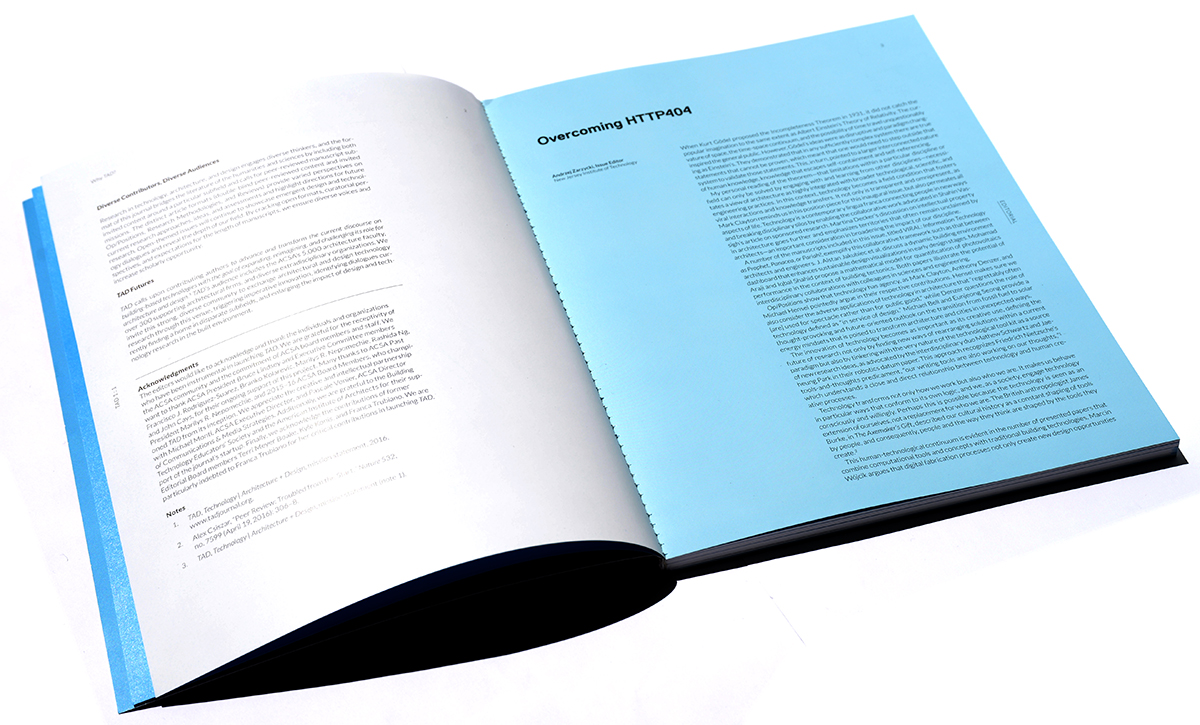The editorial by Andrzej Zarzycki titled: Overcoming HTTP404 for the inaugural issue VIRAL of TECHNOLOGY | ARCHITECTURE + DESIGN (TAD) journal can be access via TAD website on Taylor & Francis portal. For additional information and current Calls for Papers see: tadjournal.org
Issue 1:1 VIRAL: Call for Papers
Viral: Information Technology as Prophet, Panacea, or Pariah?
According to Kevin Kelly, founding member of Wired magazine, technology is ubiquitous, ever present and our destiny.[1] Smart materials, performance sensors, crowdsourcing, cloud computing, robotics and drones are but a few of the emerging technologies vastly transforming the way in which buildings are designed and experienced. And yet the role these information technologies play in shaping architecture is rarely at the center of architectural thinking, criticism or design. Are architects uninterested or reluctant to address the proliferation of data-based, digitally-centered, and smart technologies that are impacting the allied fields of construction, engineering, material science, and product design? Most recently, celebrated architect Rem Koolhaas suggested the possibility of a nefarious relationship between architecture and smart technologies, stating; “There is a potentially sinister dimension to …being surrounded by a house full of sensors that can follow you on the moment of entry, to the moment you set your bedroom temperature, to the moment you set your likely return to your house.” [2] Is this seeming aversion to sensors and data points similar to that of nineteenth-century architects who neglected to consider the impact of emerging industrialized technologies of cast iron, glass, and steel; and who hesitated to acknowledge the many ways they were destined to redefine architecture? It was fifty years before architects embraced ferrous metals and sheets of plate glass in service to design, and this, only after historian Sigfried Giedion conceptualized their potential. Similarly, at the end of the twentieth century, we were slow to recognize the impact artificial environmental systems, such as air-conditioning, had on design.
In this light, VIRAL–the inaugural call for papers for TECHNOLOGY | ARCHITECTURE + DESIGN (TAD)–asks whether architecture is once again on the threshold of significant changes in the material, technical and procedural context of design. In the twenty-first century, information technologies are transforming how buildings are designed, constructed, delivered, occupied and assessed. From crowdsourcing to collective wisdom, information technology is redefining our relation to the environment and to each other. Yet, to what extent are architects, and those who educate them, actively involved in articulating a path for such technologies within their work—be it in their research, scholarship, or design work? Alternatively, to what extent are architectural educators cautious, resistant, or critical of this highly speculative engagement with barely recognizable or material forms of technology?
TAD seeks contributions from scholars, educators, designers, and architects who research, test and create using these emerging technologies and who seek to articulate and theorize the impact they will have on the built environment. The journal seeks articles that feature primary research in information technologies and their impact on materials, construction, structures, building systems, energy studies, environmental design, sustainability and resiliency, project delivery, and practice-based innovations. Papers should advance scholarship with a focus on the impact, translation and integration of technology in architecture and design.
[1] Kevin Kelly, What Technology Wants, Viking Press, 2010
[2] Published in Dezeen – http://www.dezeen.com/2015/05/27/rem-koolhaas-interview-technology-smart-systems-peoples-eagerness- sacrifice-privacy-totally-astonishing/
